- Joined
- Oct 22, 2018
- Messages
- 144
- Points
- 253

Starting from the 1850s, the sudden and growing fashion of crustacean fishing, particularly abundant in the environment of the Sein Causeway, motivated the locals to develop and build specific boats for these captures. The Isle of Sein is the emerged part of the Sein Causeway, a narrow submarine platform about 25 km long that extends westward from the granite promontory of the Point of Raz, at the western tip of Bretagne, France.
Initially, small flat-bottomed skiffs that were very maneuverable were used, mainly dedicated to capturing lobsters. Equipped with traps, but also with longlines, these light boats evolved until the construction, between 1900 and 1914, of larger and more efficient ships with lengths ranging from 9 to 12 meters. Usually fitted with a semi-deck, they also had a live well, fed through small holes in the lower part of the hull lining, which could hold up to three hundred lobsters.
These sloops were very seafaring, stable, and had smooth movements thanks to the liquid ballast of their fish tanks, allowing them to sail with ease even in waves or choppy seas and bring their live cargo to port. Furthermore, their well-defined V-shaped hulls gave them the necessary maneuverability to navigate the dangerous areas where they worked.
The model reproduces a sloop from the 1900s, intended for a crew of four or five men. The development of summer tourism at the beginning of the century also contributes to the consumption of large crustaceans, from the coast of Trégor to Belle-Ile-en-mer. From April to November, a large number of fishermen and sailors from the region, accompanied by their wives and children, emigrate to the ports of southern Bretagne.
In the first quarter of the 20th century, due to the scarcity of lobsters on the local coasts, fishermen begin to equip larger boats to travel to other fishing grounds, mainly to Mauritania, and the lobster sloops are gradually disappearing.
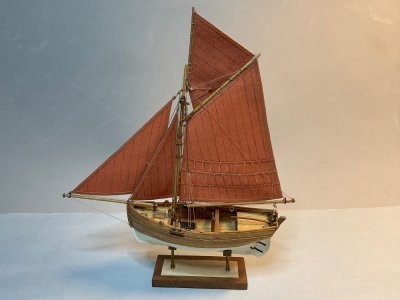
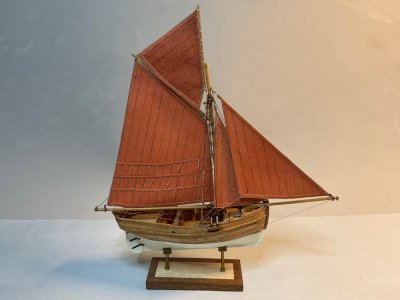
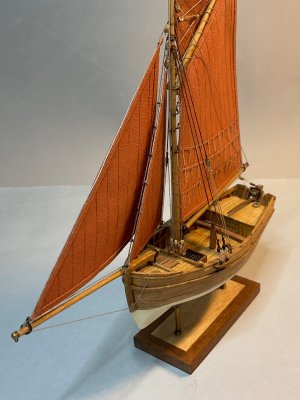
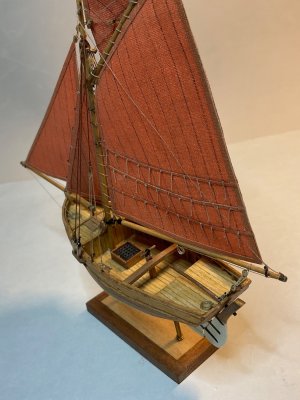
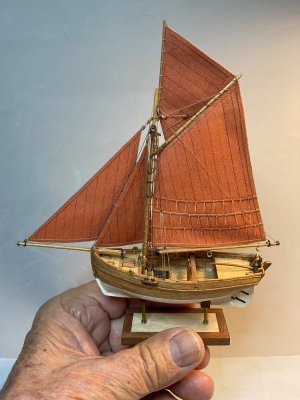
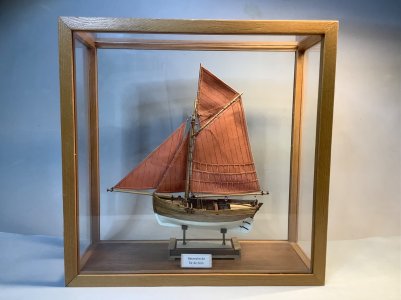
Initially, small flat-bottomed skiffs that were very maneuverable were used, mainly dedicated to capturing lobsters. Equipped with traps, but also with longlines, these light boats evolved until the construction, between 1900 and 1914, of larger and more efficient ships with lengths ranging from 9 to 12 meters. Usually fitted with a semi-deck, they also had a live well, fed through small holes in the lower part of the hull lining, which could hold up to three hundred lobsters.
These sloops were very seafaring, stable, and had smooth movements thanks to the liquid ballast of their fish tanks, allowing them to sail with ease even in waves or choppy seas and bring their live cargo to port. Furthermore, their well-defined V-shaped hulls gave them the necessary maneuverability to navigate the dangerous areas where they worked.
The model reproduces a sloop from the 1900s, intended for a crew of four or five men. The development of summer tourism at the beginning of the century also contributes to the consumption of large crustaceans, from the coast of Trégor to Belle-Ile-en-mer. From April to November, a large number of fishermen and sailors from the region, accompanied by their wives and children, emigrate to the ports of southern Bretagne.
In the first quarter of the 20th century, due to the scarcity of lobsters on the local coasts, fishermen begin to equip larger boats to travel to other fishing grounds, mainly to Mauritania, and the lobster sloops are gradually disappearing.






